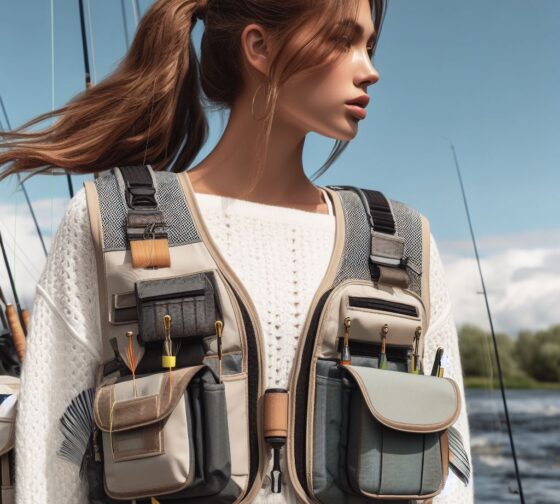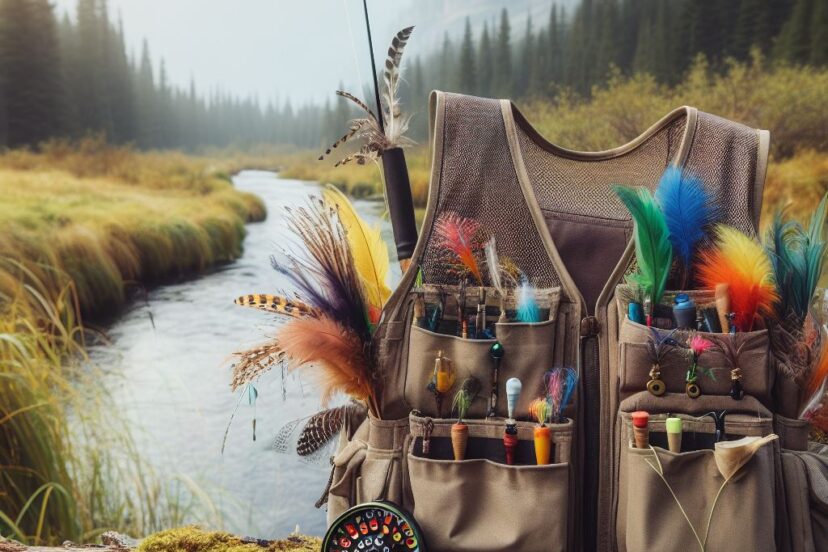Fly Fish Vest: A Comprehensive Guide to Angler’s Must-Have
*We may earn a commission for purchases made using our links. Please see our disclosure to learn more.
The Fly Fish Vest: Your Ultimate Companion for Angling Adventures
As an avid fly fisherman, I can attest to the importance of having the right gear for a successful and enjoyable day on the water. Among the various tools and accessories at your disposal, a fly fish vest stands out as a must-have item. In this article, I’ll share my insights and advice on why you need a fly fishing vest, how to choose the right one, what essential items to carry, and much more.
Why You Need a Fly Fish Vest
Convenience and Organization
One of the primary reasons for investing in a fly fishing vest is the convenience it offers. When you’re out on the river or in a serene lake, you don’t want to be fumbling through a tackle box or backpack to find your gear. A well-designed vest keeps your essential tools and accessories within arm’s reach, allowing you to focus on what matters – catching fish.
Carrying Essential Gear
Fly fishing often requires a variety of equipment, from different fly patterns to leaders and tippets of various strengths. A fly vest provides ample storage space, allowing you to carry multiple fly boxes, ensuring you have the right fly for the conditions and the fish’s preferences.
Choosing the Right Fly Fish Vest
Consider the Material
When selecting a fly fishing vest, consider the material it’s made of. Nylon and mesh vests are popular choices due to their durability and breathability. Ensure the material is water-resistant to protect your gear from unexpected splashes.
Pockets and Storage Space
A vest’s pocket configuration is crucial. Look for a vest with multiple pockets of different sizes. This diversity allows you to organize your gear effectively. Some vests even feature specialized pockets for tools, fly patches, and tippet spools.
Adjustable Straps for Comfort
Comfort is key during long hours of fly fishing. Opt for a vest with adjustable straps to ensure a snug fit. This feature prevents the vest from bouncing around or causing discomfort during your fishing expedition.
Essential Items to Carry in Your Fly Fish Vest

Fly Boxes and Flies
Fly boxes should be a top priority. Carry a selection of flies that match the local insects and the fish’s preferences. Make sure your fly boxes are organized so you can quickly find the right pattern when needed.
Tippet and Leaders
Tippet material and leaders are essential for fine-tuning your presentation. Carry different sizes to adapt to changing conditions. A well-organized leader wallet can keep these items readily accessible.
Tools and Accessories for Your Fly Fish Vest
Your vest should accommodate essential tools like nippers, forceps, and a hemostat. Don’t forget accessories like floatant, indicators, and a line straightener. Organize them in pockets or pouches for easy access.
Tips for Packing Your Fly Fish Vest Efficiently
Prioritize Essentials
When packing your vest, prioritize the essentials. Keep frequently used items in easily accessible pockets. Reserve the less frequently used gear for deeper or less accessible pockets.
Use Pockets Wisely
Assign specific pockets for specific purposes. For example, dedicate a pocket to dry flies, another for nymphs, and one for streamers. This organization helps you find what you need quickly.
Keep It Lightweight
While it’s tempting to load up your vest with every piece of gear you own, remember that excess weight can be tiring. Carry only what you anticipate using for the day to keep your vest light and manageable.
Fly Fish Vest – Stay Comfortable All Day
Layering for Weather Conditions
Layer your clothing to adapt to changing weather conditions. A vest doesn’t replace the need for proper clothing. Consider breathable waders, a waterproof jacket, and a hat to shield you from the elements.
Hydration and Snacks
Stay hydrated by carrying a water bottle or a hydration system in your vest. Pack energy-boosting snacks like granola bars or nuts to keep your energy levels up throughout the day.
Proper Weight Distribution
Distribute the weight in your vest evenly to prevent discomfort. Heavy items should be balanced between pockets to avoid straining your neck or shoulders.
Safety Measures for Your Fly Fish Vest
Floatation Devices
Safety should always be a priority when you’re near water. Consider a vest with built-in floatation, or wear a life jacket over your fishing vest for added security.
Insect Repellent and Sunscreen
Protect yourself from the elements. Carry insect repellent and sunscreen to ward off biting insects and prevent sunburn.
Emergency Contact Information
Always have emergency contact information on hand. A laminated card with your name, contact details, and any medical conditions can be a lifesaver in case of an accident.
Maintenance and Care for Your Fly Fish Vest
Cleaning and Drying
After each fishing trip, clean and dry your vest to prevent mold and odor. Pay attention to pockets and crevices where dirt and debris can accumulate.
Inspecting for Wear and Tear
Regularly inspect your vest for wear and tear, such as frayed straps or zippers that are not functioning correctly. Address these issues promptly to extend the vest’s lifespan.
Replacing Zippers and Straps
If your vest’s zippers or straps show signs of wear, consider getting them replaced by a professional. A well-maintained vest will last you for many seasons.
Versatility of a Fly Fish Vest

Alternative Uses
Your fly fishing vest can serve other outdoor activities like hiking, birdwatching, or photography. Its pockets and organization make it a versatile companion.
Adapting to Different Fishing Styles
Fly fishing vests are not limited to fly fishing alone. They can also be used for spin fishing or bait fishing, offering a convenient way to carry your tackle.
Conclusion
A well-chosen fly fishing vest can significantly enhance your angling experience. It keeps your gear organized, ensures easy access to essentials, and provides comfort throughout your fishing adventures. Remember to select a vest that suits your needs, take care of it, and stay safe on the water.
FAQs for a Fly Fish Vest
- What is the best material for a fly fishing vest?
- The best materials for fly fishing vests are usually nylon or mesh. They offer durability and breathability, making them suitable for various fishing conditions.
- How do I organize my fly vest efficiently?
- Organize your fly vest by assigning specific pockets for different items. Prioritize frequently used gear in easily accessible pockets and keep less-used items in deeper pockets.
- Can I use a fly vest for other outdoor activities?
- Yes, fly fishing vests are versatile and can be used for activities like hiking, birdwatching, or photography, thanks to their organizational features.
- What safety precautions should I take when fly fishing?
- Safety precautions include wearing a life jacket, carrying emergency contact information, and using sunscreen and insect repellent to protect yourself from the elements.
- How often should I replace my fly fishing vest?
- The frequency of replacement depends on usage and maintenance. With proper care, a quality fly fishing vest can last for many seasons, but it may need replacement if it becomes heavily worn or damaged.




